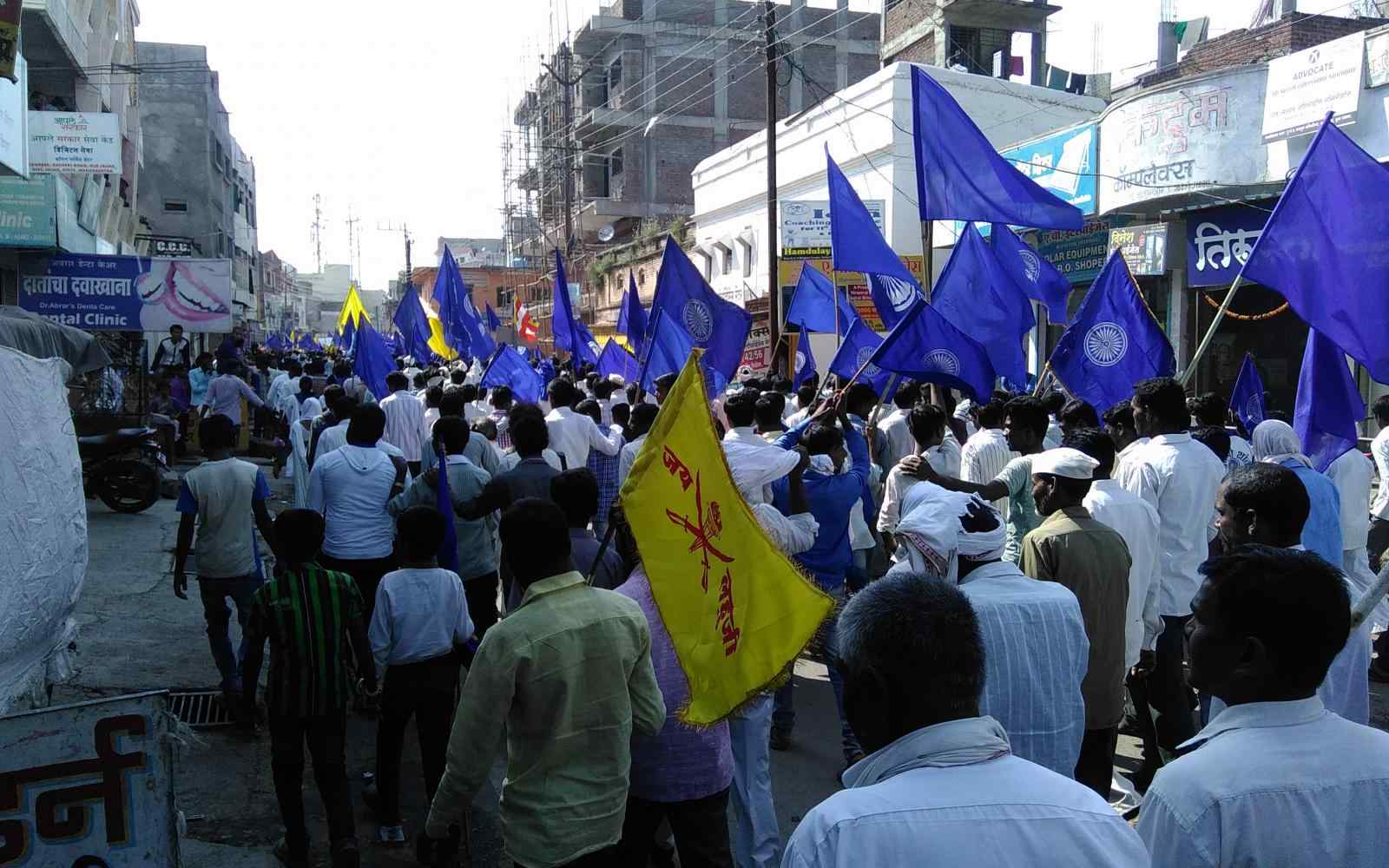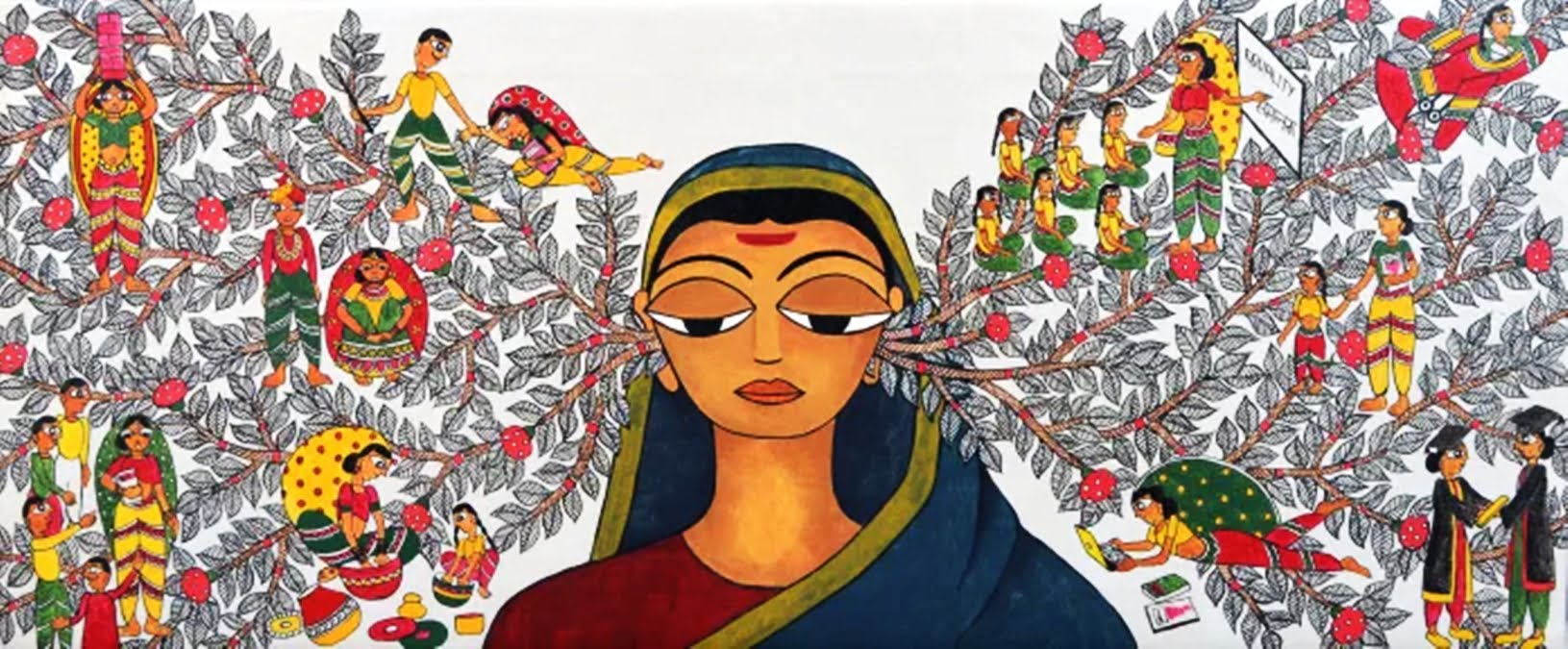It is obviously true that any kind of collective that could be formed for social activism and justice in India will be laden with the effects of caste. Same holds true for the remarkable burgeoning of India’s new women’s movement of the 70s and 80s. Many women’s organisations with political affiliations or otherwise were formed and saw an uprising of women struggling to find space in public and scrutinised the private and hidden lives of women. They supported the movement by either helping individual women in distress, such as in the cases of dowry, domestic violence or sexual harassment or by issue-oriented campaigning such as against the systemic problem of rape or wage gap.
Scholars Nandita Gandhi and Nandita Shah in their essay The Question of Autonomy bring to light how organisations such as Saheli, Women’s Centre or Manushi have had their issues around hierarchies and elitism since their conception. The questions of salary structures, what skills are favoured (for instance, helping individual women in distress or active protests?), having a leader or a head to allocate work or everyone taking up work on their own accord, etc. bred along naturally with the activities of these organisations. While collectives largely reject having a leader and have worked around some of the other problems to minimise them, it has been pointed out that they too, were not immune to ‘subtle hierarchies’.
Also read: Dalit Women Will Get Justice Only If Casteist Judicial System Is Uprooted
“[…] there are groups within groups which usually consists of people who have certain things in common such as education, social class, tastes, language or a political tendency.” as pointed out to be enablers of inevitable hierarchies by scholars Nandita Gandhi and Nandita Shah in their essay The Question of Autonomy. To claim that these are not affected by caste is to deny the existence of intersectionality of caste in the feminist movement in India. It has widely been possible to include the manoeuvres of caste when considering the oppression of women only after an upper caste bias and ignorance of caste realities in those decades of the women’s movement. Introspection on these biases and rethinking the stake of caste in anything that can be about women was brought about post Mandal commission’s implementation (after 1990). The upper-castes actually tried to fight for the claim that their rights are being taken away by the virtue of reservations.
A divisive category
As there were subtle hierarchies in the workings of women organisations, in direct contrast to that was the more conspicuous yet ignored problems that the category of ‘dalit women’ face to this day. It has been repeatedly shown and argued—rather slowly realised and never completely—that this category has been the ‘downtrodden of the downtrodden, the dalits of the dalits’. They have been at the worse ends to the different ills that affect all women: being overwhelmingly uneducated/under-educated as compared to other women, severe exploitation under the devadasi system and dehumanisation of untouchability to name a few. In general, the specific problems of being a dalit are hidden under and ruled over by the category of being a woman. As has been said, ‘All women are dalits’.
To categorise the ‘dalit’ in women was to divide and contort any kind of solidarity people in any movement can have. The women’s movement specifically came under question with the discontents of dalit women as they couldn’t find a solid discourse in it. A kind of activism came under question; an upper-caste and caste-indifferent one.
To categorise the ‘dalit’ in women was to divide and contort any kind of solidarity people in any movement can have. The women’s movement specifically came under question with the discontents of dalit women as they couldn’t find a solid discourse in it. A kind of activism came under question; an upper-caste and caste-indifferent one. It is telling of the history of the women’s movement that dalit women ultimately had to form their own organisations. The National Federation of Dalit Women formed by the dalit social activist Ruth Manorama in 1995 is one of the first and most significant sign of the manifestations of these discontents.

The broadly upper-caste feminist activism of the 70s to the 90s can be said to be born in the face of lack of reflection of and allyship to the ‘other’, that is, the denied identities and plight that caste instills on women. It is a constant tussle between the varied identities and conditions of women, broadly the two: upper-caste, class women and lower-caste, class women. And while the women’s movement’s general denial of the factor of caste was perhaps expected, the dalit movement too didn’t fully justify the condition of dalit women. It too questioned the use of category of ‘dalit woman’ for the anti-caste struggle and blamed it to be divisive in nature for the movement. With its superior goal of anti-brahminism, the role of patriarchy was not made discursively useful to the movement.

Hence “[…] the dalit movement shows men almost exclusively in leadership positions. Women are the mass, the crowd in these movements […] The agendas of the movements are to fight for land, but not entitlements for women; for minimum wages, but not for equal wages”, scholar and activist Annie Namala pointed out in her essay Dalit Women: The Conflict and the Dilemma.
In the absence of strong allies, the establishing force of the identities and lives of dalit women had to be none other than themselves.
The parliament and women’s representation
After the Mandal commission’s implementation and subsequent protests, the effects of the gradual rise of the backward castes and the dalit women continued to linger in the political atmosphere. The upper caste hate-protests carried by spectacles of self-immolation would reek of animosity that would be reflected by the lower castes too. It was perhaps in the spirit of this lingering feeling that an extreme caste-based opposition to the Women’s Reservation Bill (WRB) was expressed by many MPs of the OBC community. As explained by feminist scholar, Nivedita Menon in her essay Elusive ‘Woman’: Feminism and Women’s Reservation Bill:
“The most reviled, explicitly caste-based opposition to women’s reservations has been the derogatory reference of Sharad Yadav to the ‘short-haired’ women who would overrun parliament. While this has been understood as a misogynist statement, we must see it also as expressing a legitimate fear that reservations for women would radically alter the composition of parliament in favour of upper classes and upper castes – the term ‘parkati mahilaen’ in this context drawing upon a common stereotype of westernised and elite women. […] this kind of opposition to the bill in its present form has to be recognised as arising from the politics of caste identity.”
And thus, the upper-caste hegemony over the discourse for women that inevitably subdued many attempts of the claim of dalit identities of women found itself resisted exuberantly by the ‘men of lower castes’ using the ‘vice’ of caste and ‘virtue’ of misogyny.
The WRB, first introduced in 1996, makes mandatory the representation of women in one-third of the total seats of the parliament. And it was seen that the Parliament was divided into men and women, the former all opposed to the Women’s Reservation Bill. Amidst these controversies and debates, the point of convergence for two distinct stances in the women’s movements: one that only ‘questions the inequality between two genders’, remaining oblivious of caste and the other that merges gender justice with recognition of caste, can be found.
The fear of power being handed over to the upper strata of the society by only a switch of gender has also been expressed by backward castes, dalit women and others who supported the weight of these identities. While it was argued that this bill is mandatory for gender justice and serves to eliminate the rampant power inequality based on gender, many in the parliament and outside questioned it for being hurriedly pushed by women of the economically well off, and in general, savarna creamy layer. And while supporters of the cause of backward and dalit women claimed the bill to be ‘an upper caste ploy to curb the rising tide of lower caste men’, the BJP leader Uma Bharti has consistently asked for reservations for OBC, SC and ST women within the WRB itself, since the time the bill was tabled in the parliament. On the other side, the upper-caste BJP leader Sushma Swaraj had supported the bill as it is.
Also read: Towards A Dalit Feminist Standpoint – The Emancipatory Project For All Women
Currently speaking…
The bill has lapsed as many times as it has been tabled in the parliament. Through all these years, quotas within quotas have been included for SCs, STs and Anglo-Indians but not for OBCs. But it remains to be taken up and discussed by the Lok Sabha after being passed in the Rajya Sabha in 2010. While the bill if passed is certainly a win for entry of more dalit women into the parliament, caste and its implications will not eradicate itself. The root action should be to recognise the greater onslaught of caste that further divides the already oppressed and bring in greater solidarity from those in the upper-strata and in general, the upper castes for the movement. Regardless, dalit women continue to fight for their rights and the movement in the grassroots and academia has evolved to encompass an intersection of caste and women issues.
While the women’s reservations bill if passed is certainly a win for entry of more dalit women into the parliament, caste and its implications will not eradicate itself. The root action should be to recognise the greater onslaught of caste that further divides the already oppressed and bring in greater solidarity from those in the upper-strata and in general, the upper castes for the movement.
However, it seems upper-castes haven’t budged yet. And, the upper-castes, mainly Thakurs and Rajputs, readily standing by the four upper-caste men who raped a dalit woman in Hathras is reflective of how the plague of non-allyship of the upper-castes to the dalit cause continues.
Kushal Choudhary is an independent writer based in Banaras, Uttar Pradesh. Currently staying in Karnataka, he is interested in reading and writing about caste, science, gender, education and philosophy. He rarely writes on his Medium blog Zero Soliloquy. He can be found on Instagram, Twitter and Facebook.
Featured image source: A painting in the Madhubani style by Delhi-based artist Malvika Raj, titled ‘Mai’, celebrating the life of Savitribai Phule via LiveMint




